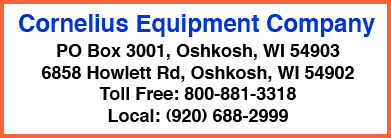



Royer, a former Terex company, has been making shredding/screening/blending machines since the 1960's. Royer continues to make advancements in their machine designs which keeps them competitive.
There are probably more Royer machines in the USA processing soil and other materials than any other make. Royer has always used the same basic design of the shredding mechanism for all their models over the years, namely, a high speed shredding belt. Royer's are manufactured in Oshkosh, Wisconsin.


Royer shredder machines are a complete mobile processing plant. Royer uses the same cleated high speed shredding belt design on all models to churn, pulverize, and aerate the material. The width and length of the shredding belt increases with each larger model. The cleats are approximately 5/8 inch high, hardened metal strips riveted closely together crossways on a continuous conveyor belt. Above and perpendicular to this belt at the discharge end are metal plates or blades. These blades run continuously across the belt to provide a striking surface for any oversized material. Royer calls this mechanism the "sweep". The adjustable gap between the blades and the cleats provides an opening for shredded material to exit. Oversized materials [e.g., stones] tumble backwards, since the shredding belt is at a steep angle, fall out a chute onto a "trash" conveyor, and are piled along side of the machine. Please see "Patented Four-

Royer's current larger models are the 166, 266, and 466 which were introduced starting about 1993-
The model 166 was introduced in 1999. It has the same basic mechanical drive design as the older 262 (see below) but with a diesel engine.
Royer also still makes two smaller shredder models with gasoline engines: the model 112 (hand fed) and the model 120 ( for a skid-
The larger models made from about 1975 to 1994 were the 300, 365, and 401. These have diesel/hydraulic drives. Only the 401 has the automatic controls described in the prior paragraph (but electronic on the 401). The primary smaller models made then were the 120, 182 and 262 with gas/mechanical drives with no trash conveyors [except optional on the 262]. See "Royer 1975-
Older models made from the 1960 to about the mid-
The advantages of all hydraulic drives are:
- The feed belt speed can be adjusted to match the optimum material flow without varying the engine speed as with mechanical models.
- The shredding belt can be reversed to purge the sweep area of material build-
up. - Simplicity of drive train components compared to mechanical drives.
For more information on Royer machines and their "Four Step Processing Action",
CONTACT US or visit the ROYER website at www.royerind.com

© Cornelius Equipment Company 2011-


Let Us know what you are looking for!